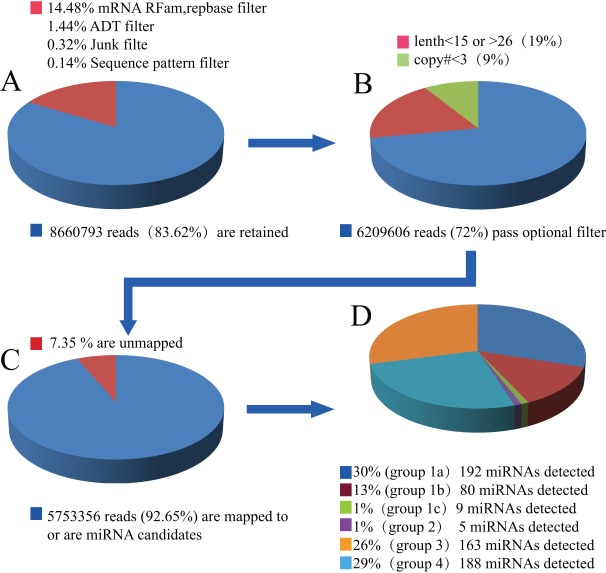Figure 1. Analysis of sequencing data.
To obtain mappable sequences from raw sequencing data, we used a series of digital filters to remove various unmappable sequencing reads. (A) Unique families of sequences were generated by sorting raw sequencing reads. “Impure” sequences were then removed by sample preparation, sequencing chemistry and processes, and the optical digital resolution of the sequencer detector. Unique sequences were pulled from selected databases, including mRNA, rRNA, tRNA, snRNA, snoRNA, and Repbase databases. (B) (i) A length filter was used to retain unique sequences of 16–26 nt. (ii) Sequences with copy numbers greater than the predefined cut-off number (default = 3) were also retained. (C) After masking the adaptor sequences and removing contaminated reads, the 92.65% mappable clean reads were processed for advanced analysis. (D) The unique mapped sequences were grouped as “unique sequences mapped to selected species pre-miRNAs in miRbase, and further mapped to pig genome and EST,” and divided into six groups.

